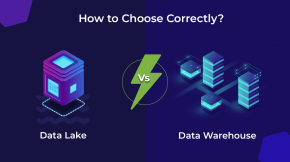Why Every Business Needs OCR Artificial Intelligence Document Processing Now
For decades, businesses have relied on OCR artificial intelligence technology to digitize documents and extract text. But despite incremental improvements over the years, OCR document processing capabilities remained limited. Documents with poor print quality or complex formatting stymied the technology. Handwritten text recognition was poor at best. And extracting meaning from documents required extensive human effort.
But now, the AI revolution is unleashing new possibilities. Sophisticated deep learning techniques are enabling OCR artificial intelligence to achieve unprecedented accuracy across document types. Natural language processing (NLP) allows systems to not just read text, but understand it. Intelligent automation streamlines document workflows end-to-end.
In this post, we’ll explore how AI for scanning documents is transforming OCR document processing, the business benefits this enables, real-world applications, and what lies ahead. For CTOs and technology leaders seeking to digitally transform content-intensive processes, understanding these advances is key to harnessing the power of AI for scanning documents for competitive advantage.
The Limitations of Traditional OCR Document Processing
Legacy OCR artificial intelligence technology relied on rules-based algorithms to recognize text in scanned document images. The workflow typically involved:
- Scanning a document to convert it into a digital image format.
- Preprocessing the image to improve quality and extract the textual regions. This included adjustments for orientation, brightness, blurring, etc.
- Performing character recognition using templates and pattern matching. The system would attempt to match characters against known letterforms.
- Post-processing steps like spell-checking to correct errors.
This workflow had several drawbacks:
- It depended heavily on image quality. Scanned documents with artifacts, creases, or color issues could severely degrade accuracy.
- It worked well only for recognizing machine-printed text, not handwritten content.
- Complex document layouts like columns, tables, and nested text created challenges.
- Every document format required templates and custom logic for location text regions.
- Understanding context or meaning required additional NLP techniques.
Overall accuracy tended to be 80-90% for printed documents, but much lower for handwritten content.
To compensate, organizations had to invest substantial resources in manual verification and correction. Despite OCR document processing, document digitization remained expensive, slow and error-prone. The AI Revolution in OCR Artificial Intelligence
In recent years, AI for Scanning Documents has transformed OCR Document Processing with new approaches that overcome traditional limitations:
- Deep learning algorithms can extract text from document images with far higher accuracy, even from poor quality inputs, using OCR Artificial Intelligence.
- Advanced computer vision techniques can disentangle complex document layouts and text styling with ease, enhancing OCR Document Processing.
- OCR Artificial Intelligence systems now combine optical recognition with NLP to understand document context.
- AI for Scanning Documents enables end-to-end automation of digitization workflows.
Let’s examine some of the key innovations powering the AI Revolution in OCR.
Deep Learning for Image Recognition
Legacy OCR Document Processing systems relied on hand-coded rules and logic. But deep learning models take a different approach – they learn directly from large volumes of training data. By exposing the algorithms to millions of text sample images, they can discern subtle visual patterns that distinguish different characters and words.
Modern deep learning techniques like convolutional neural networks (CNNs) are exceptionally good at analyzing pixel-level patterns in images. For OCR Artificial Intelligence, CNNs transform how systems recognize characters, words, and text regions in scanned documents.
Instead of relying on brittle templates, deep learning models reliably extract text even from poor quality inputs. They easily handle diverse fonts, sizes, styles, and orientations. And they keep improving as their training data expands, enhancing OCR Document Processing.
According to benchmarks, deep learning has boosted text location accuracy to over 99% in scene images and semantic segmentation accuracy to over 97% in document images. Their performance will only grow with more data, revolutionizing AI for Scanning Documents.
Advanced Computer Vision
Digitizing documents also requires understanding their layout and formatting – columns, headings, captions, tables, etc. Traditional techniques struggled with complex documents.
Modern computer vision algorithms excel at this. They can bisect a document image into sections, identify shapes and boundaries, and disentangle text even if it spans multiple columns or nested boxes, enabling advanced OCR Document Processing.
For example, the Rossum Elucidate technique can detect over 30 semantic entities like dates, codes, names, signatures, logos, and more. This allows accurately extracting information from forms and invoices without manual setup, leveraging OCR Artificial Intelligence.
By combining text recognition with structural analysis, AI for Scanning Documents delivers a complete understanding of document imagery beyond just text.
Contextual Understanding via NLP
But digitizing text is only half the story – understanding it is equally crucial. This is where NLP comes in, complementing OCR Artificial Intelligence.
State-of-the-art NLP models can parse textual content, extract key entities and relationships, summarize large passages, and generate descriptions. This provides critical context and makes extracted data truly actionable, enhancing OCR Document Processing.
For instance, invoice digitization involves more than ripping text from PDFs. NLP techniques can identify vendor details, product codes, quantities, amounts payable, etc. and extract them into structured formats, utilizing AI for Scanning Documents.
Adapting to New Document Types
A key challenge with traditional OCR Document Processing software was needing to configure templates and rules for every new document type. But OCR Artificial Intelligence systems adapt seamlessly thanks to transfer learning.
With transfer learning, models pre-trained on large datasets can be fine-tuned to new document types using just a small sample of training data. This allows quick adaptation without extensive reconfiguration, streamlining OCR Document Processing.
For instance, Rossum designed their Elucidate engine to ingest sample documents and iteratively improve recognition. Starting from a generic foundation, the AI for Scanning Documents customizes itself for specific document domains, revolutionizing OCR Artificial Intelligence.
End-to-End Intelligent Automation
Combining computer vision, NLP and adaptive ML enables automating the digitization pipeline from end-to-end using OCR Artificial Intelligence. AI techniques can:
- Import documents from MFP scans, email, FTP or cloud storage
- Preprocess them for quality and orientation
- Recognize text regions and extract characters
- Identify document structure and key fields
- Parse text and extract semantic entities
- Export structured data to databases and workflows using OCR Document Processing
With dynamic workflows, the system can even route exception documents needing human review. This reduces manual overhead to just QA verification.
Together, these innovations add up to a generational leap in OCR Artificial Intelligence capabilities. Let’s examine why this matters for businesses.
Business Benefits of AI for Scanning Documents
Intelligent OCR Document Processing delivers tangible benefits across digital transformation initiatives:
Improved accuracy and data quality
By combining computer vision and NLP, AI for Scanning Documents systems extract information from documents with over 99% accuracy. This reduces errors and costly data rework. OCR Artificial Intelligence can even fill in missing information using context.
Faster processing with less labor
Automating document ingestion, classification, and data extraction minimizes manual document processing using OCR Artificial Intelligence. This accelerates digitization, boosts throughput, and reduces labor costs.
Broader document support
AI for Scanning Documents techniques can extract value from practically any document – scanned, digital, handwritten, low quality. This unlocks digitization benefits for wider categories of content.
Quicker adaptation to new document types
Transfer learning allows OCR Artificial Intelligence systems to adapt to new document templates with minimal additional training data. This simplifies supporting new forms and document sources.
Deeper document understanding
Advanced NLP delivers actionable data by extracting context, entities, and relationships – not just text. This enables deploying extracted data immediately to downstream apps using OCR Document Processing.
Improved data accessibility and reuse
Structured, machine-readable data unlocks options for analytics, RPA, and other applications impossible with document images alone. It also facilitates findability and search using AI for Scanning Documents.
Enhanced process visibility
End-to-end automation provides visibility into bottlenecks, exceptions, and data quality issues. This supports continuous optimization of OCR Artificial Intelligence systems.
Scalability across document volumes
AI for Scanning Documents systems scale cost-effectively across document loads and use cases by leveraging cloud infrastructure. This makes them viable for even the largest content repositories.
With these advantages, OCR Artificial Intelligence can drive dramatic ROI across areas like finance, accounting, supply chain logistics, and more. Let’s look at some real-world examples.
AI OCR in Action: Real-World Use Cases
1. Invoicing and Accounts Payable
Invoice processing is a prime target for OCR artificial intelligence to reduce costs and delays. Top business benefits include:
- Auto-extraction of supplier details, invoice numbers, dates, line items, taxes, totals, etc. eliminates manual data entry using OCR document processing.
- Invoice status tracking and exception handling improve AP team productivity with the help of AI for scanning documents.
- Understanding line-item descriptions enables deeper process and spending analysis.
- Matching invoices to purchase orders prevents errors and fraud.
- Accelerated invoice handling improves supplier relationships and captures early payment discounts.
According to an IBM study, AI OCR data extraction can reduce invoice processing costs by 80% or more.
2. Healthcare Claims Processing
Medical claims processing involves interpreting insurance forms, doctor notes, clinical records, and more. OCR artificial intelligence delivers major advantages:
- Structured data extraction from forms auto-populates billing and claims systems using OCR document processing. This prevents errors and billing rejections.
- Identifying key entities in clinical notes assists healthcare analytics and administration.
- Linking claims to medical records improves coding and charge capture.
- Automation handles routine claims faster so staff can focus on complex cases with the help of AI for scanning documents.
One healthcare provider achieved $11 million in savings annually using an AI OCR-powered RPA solution for claims handling.
3. Legal Contract Analytics
Reviewing and analyzing legal contracts is time-intensive yet crucial for managing risk. With OCR artificial intelligence, law firms and legal departments can:
- Digitize paper contracts like leases, employment agreements, and supplier contracts using OCR document processing.
- Quickly extract key entities, clauses, terms, and concepts.
- Automate contract abstraction into databases.
- Identify high-risk clauses and contracts requiring greater review.
- Accelerate legal review by 20-50% before contract execution with the help of AI for scanning documents.
Leading law firms report AI OCR-based contract review tools saving 15,000+ hours annually.
4. Mailroom Automation
Mailrooms receive vast volumes of printed correspondence containing customer requests, purchase orders, payments and more. OCR artificial intelligence techniques can significantly simplify processing:
- Multi-page mail extracts into single document files using OCR document processing.
- Handwritten and printed text recognition without templates with the help of AI for scanning documents.
- NLP extracts addresses, dates, names, and amounts.
- Smart mailroom workflows route documents to relevant teams.
With AI OCR, one financial services company reduced mailroom processing costs by 80% while improving accuracy.
5. Accounts Receivable
Lockboxes handle hundreds of customer checks and payment documents daily. OCR artificial intelligence enables major gains:
- Recognizing handwritten and cursive text on checks.
- Reading MICR codes, bank details, signatures, and amounts.
- Linking payments to open invoices and orders.
- Accelerating deposit preparation.
- Identifying exceptions and potential fraud with the help of AI for scanning documents.
AI OCR data extraction cuts check processing costs by 90% or more in lockbox environments.
The Future of AI OCR
While AI OCR has already had a transformative effect on document digitization, the technology continues to evolve rapidly. Here are some emerging innovations that could shape the next generation of intelligent OCR artificial intelligence:
- Next-gen deep learning architectures will keep pushing recognition accuracy higher. Experimental models like PaLM achieve over 99.5% text accuracy on benchmarks.
- Reinforcement learning techniques will enable systems to learn with less training data. This will simplify configuring AI OCR for new domains.
- Improved computer vision will unlock extracting data from complex tables, diagrams, and other structured document elements.
- Generative AI OCR could recreate missing sections of damaged documents by predicting appropriate text.
- Multimodal systems combining vision, language, and data modalities will deliver deeper contextual understanding designs will enable combining AI OCR capabilities with human judgment for handling exceptions.
- Knowledge sharing across AI OCR deployments will accelerate learning and consistency.
- Cloud-native implementations will leverage elastic infrastructure for scalability.
As these innovations mature, AI OCR will become even smarter, faster, and more flexible.
Key Takeaways for Technology Leaders
For CTOs and technology executives exploring OCR artificial intelligence and OCR document processing, the key takeaways are:
- Deep learning and computer vision enable OCR with over 99% accuracy even from low-quality inputs.
- Advanced NLP provides critical context for extracted text, delivering actionable data.
- End-to-end automation streamlines digitization reduces manual work, and improves analytics value.
- Adaptive AI for scanning documents simplifies supporting diverse and evolving document types across the enterprise.
- OCR artificial intelligence unlocks orders-of-magnitude efficiency gains across content-intensive processes.
- Continuous innovation will enable tackling even the most complex OCR document processing use cases.
However, integrating AI to enhance the capabilities of scanning documents requires a thoughtful strategy. And this is where Beyond Key comes in. We help you:
- Assess document-centric workflows that drive significant manual effort and cost today. We help prioritize high-impact automation opportunities for OCR artificial intelligence.
- Start with a pilot project to build internal capabilities and quantify benefits before scaling OCR document processing.
- Apply AI for scanning documents not just on current features, but the pace of innovation in their underlying technology.
- Ensure the OCR artificial intelligence platform supports easy integration into your existing IT environment. Seek open and standards-based APIs.
- Leverage cloud deployment for scalability, faster innovation, and usage-based economics for OCR document processing.
- Analyze data and metrics beyond processing throughput. Measure downstream impact on productivity, cycle times, quality, and cost for AI for scanning documents.
- Build feedback loops between OCR artificial intelligence systems and users focused on continuous improvement.
With Beyond Key, technology leaders can harness AI for scanning documents’ potential to achieve a generational leap in unlocking value from documents.
The Bottom Line
OCR and Generative artificial intelligence are transforming OCR document processing, unlocking far more valuable information from enterprise document repositories. New techniques overcome traditional limitations around image quality, handwriting, complexity, and configurability.
Modern OCR artificial intelligence combines computer vision, NLP, and adaptive ML to deliver unprecedented accuracy, context, and automation. Leading organizations are using these capabilities to accelerate digital transformation of content-heavy processes.
While OCR document processing is already delivering major benefits today, rapid innovation across deep learning, computer vision, and NLP will continue expanding the technology’s capabilities. As AI for scanning documents research advances, virtually any document type or process bottleneck is fair game for automation.
Technology leaders would do well to start exploring OCR artificial intelligence now. The companies fastest at infusing content workflows with AI for scanning documents intelligence will gain an edge in cost savings, agility, and insight. The AI for scanning documents revolution has only just begun transforming document processing – but its impact will be dramatic.
Read more articles on DesignRush












